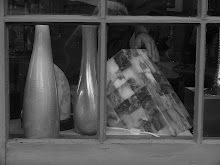North Umpqua
So often, the pictures that I make fail, in my mind, to tell the whole story behind the event that I am documenting. That's why so few images make it to these pages I guess, even though I generally make somewhere in the the region of seven to eight thousand images a year. If a picture truly is worth a thousand words, then many times the thousand words are not enough to encapsulate the fantastic adventures I experience each year.
Earlier this year, mon frere Ken and I fished the the North Umpqua river for winter steelhead. Fishing for steelhead in winter is hard. You end up wishing you would just melt away after experiencing day after day of cold driving rain. It's a level of rainfall that frequently causes rain gear to fail, so you are inevitably cold, wet and a little mouldy smelling.
Reputedly, the easiest way to catch a winter steelhead is with a short head line, a sink tip with enough aggregate weight to knock large birds from their perches and flies that mimic wet chickens in size and girth. I say reputedly because I have yet to use this method to fish for winter steelhead.
John Gierach writes that the best fishing trips are composed of leaderless groups of two people who share some commonality in their fishing method. So it was with brother Ken and I on this trip. We had decided we were going to fish in the "classic" style. This meant using strip wing flies first designed back when tweed was just camouflage that take about an hour to tie and in Ken's case; a floating line. I chose to use a long head with a light sink tip. On one of our days, we were joined by Mark Stangeland, a local guide who seemed excited about our methods and approach to fishing. This was frankly a relief, as we had both heard tales of guides who were only concerned with catching fish, not with the manner in which the fishing is approached.
So is the picture truly worth a thousand words and is the story covered in a thousand words? I think so. the picture is of Ken; cold, wet and soaked to the skin. You can see what is considered classic North Umpqua water. Just a short deep slow pocket of water where winter fish rest. In front of him in this shot is the type of boulder that fish love to hide behind. Many of the same size boulders are completely immersed in the deep guts that get fished here.
I manipulated the image, first making it black and white, with a hint of sepia. I added the vignetting, darkening the corners, a remembrance of film photos from the first part of the last century.
You can see his floating line trailing downstream. From his posture, you may be able to tell that he is straining to stay in contact with the fly, finger touching the line, alert for the lightest touch.
The only thing you don't see is his immersed Black Dog, swinging (floating) downstream on a drop of hope.
Subscribe to:
Comments (Atom)

